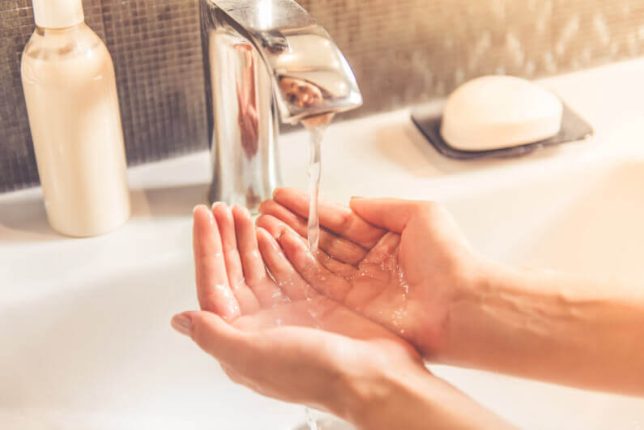
It’s happening again– your shower water pressure isn’t giving you the satisfaction you need. After the day that you’ve had, should that be so much to ask for?
Environmentally speaking, frustration in the shower could be the least of our worries. Household leaks and other pipe issues can waste approximately nearly 900 billion gallons of water annually nationwide.
If this is a recurring issue, it’s time to do some troubleshooting. It’s worth taking the time to locate the issue and perform a simple fix! Keep reading to learn more about the most common reasons of water pressure woes, and how to increase water pressure in your home.
Initial Plumping Tips
Ready to start your home improvement project? Before you call in an expert or head to the home improvement store, there are a few easy troubleshooting steps you can take to check the primary cause of your water pressure problem.
1. Check Your Flow Rate
The flow rate is how many gallons per minute are delivered through the pipes in a specific amount of time. If water supply system producing water cannot keep up with the demand, it will present like low water pressure.
An ideal household flow rate is 6 to 12 GPM (gallons per minute). Measure how much water you can capture in buckets within 60 seconds. 1-2 full buckets is ideal.
2. Check Your Pipes
Low water pressure could be a sign of a leak. Most commonly, leaks come from the following appliances:
- Toilets
- Sink faucets or under-sink pipes
- Shower faucets
- Dishwashers
- Washing machines
If you have noticed water spots or stains on walls, flooring, or ceiling, pooling water or an increase in your water bill, it’s likely that you have a leak. To confirm, you can run what is a called a “food coloring test,” which can help you identify where water is leaking from.
Additionally, an increased water meter reading is a sign of a leak. To test, shut off all faucets indoors and then turn off the water valve in your home. Once you return in two hours, an increased reading indicates there is a leak somewhere that needs to be fixed.
If you really want to splurge, upgrade your galvanized steel pipes superior plastic or copper pipe. New piping in your aging home will not only improve your water pressure, but also your water quality as it becomes free of eroding contaminants. However, this is a job that should be left to the professionals, so don’t feel inclined to take care of this job yourself.
3. Check With Your Neighbors and Local Water Department
If you receive water from the city, check to see if your water pressure issues are felt around the neighborhood. It’s possible that the city you live in is delivering the water supply to homes at a pressure of less than 40 psi (pound-force per square inch). The ideal measurement for water pressure is around 50 psi.
If your entire neighborhood or city is experiencing water pressure lower than 50 psi, you may need to install a pressure booster pump in order to see a difference.
4. Test the Pressure
If you aren’t sure if your home water pressure should be considered “low,” purchase a pressure gauge to test the pressure of your water. Simply screw the pressure gauge onto a faucet and turn on the tap.
Once you turn open the faucet (all the way) and read the water pressure on the gauge’s needle dial, a reading of less than 40 PSI means that your home has low water pressure.
How to Increase Water Pressure In Your Home
Once you have confirmed that you have measurably low water pressure, try a home fix. If none of these are successful, it’s time to call in an expert.
1. Use a Water Pressure Booster Pump
A booster pump increases the psi with electricity and a pressure tank. Simply install the booster bump and set your desired pressure with the dial on the top of the device. If you do not have 3/4 inch copper or plastic water main in the house, call Stallion Plumbing for assistance.
2. Adjust the Pressure-Reducer Valve
The pressure-reducing valve exists on the main water-supply pipe. To increase pressure, loosen up the bolt’s locking nut, then turn the bolt clockwise. Check with a pressure gauge to make sure you’ve reached the ideal psi.
3. Clean Out Pipe Buildup
Hard water deposits can block the steady flow of water coming out of your shower head. If there is a buildup of minerals and debris in your shower head causing a blockage, soak in white vinegar for a few hours. Wrap a plastic bag full of vinegar to eat away at the debris.
4. Replace the Regulator
A regulator ensures that water doesn’t rush through the pipes. Most homes that utilize city water have one of these.
An aging regulator will cause water pressure to drop. This pressure drop can affect one or all appliances in your home. It’s best to call in professionals like Stallion Plumbing if you suspect there is a problem with your regulator.
Don’t Settle for Poor Water Pressure
If you have put in the work and checked off all of the recommended boxes, it’s time to find an expert. Expert consultation can save you hours of time you may have otherwise wasted trying to figure out how to increase water pressure in your home.
Need a quick and affordable plumbing service in Salt Lake City for your water pressure problem? Schedule a consultation with a plumbing expert today.

